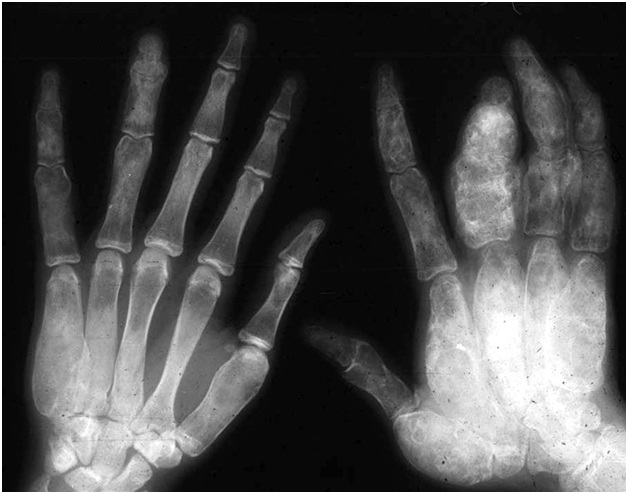Fibrous Dysplasia Causes, Symptoms, Diagnosis and Treatment

What Is Fibrous Dysplasia?
Fibrous dysplasia is a disorder where a normal bone and marrow gets replaced by fibrous tissue. This results in the formation of weak bones which are prone to expansion.
It is a term which either encompasses a group of chronic conditions or to a disease of bone marrow. It is marked by uneven growth, pain and brittleness of bones.
Fibrous dysplasia either affects a single bone or multiple bones. If it affects a single bone, it is called monostotic fibrous dysplasia and if it affects multiple bones, it is referred as polyostotic fibrous dysplasia.
Fibrous dysplasia is usually develops during childhood, and the bone lesions usually stop developing at puberty. These lesions are marked by pain and deformity.
Affected bones may include the ribs, skull, facial bones, thigh bone (femur), shin bone (tibia), upper arm (humerous), and pelvis.
Occasionally, the bones in the spine (vertebrae) are affected. Some, but not all, affected individuals experience repeated bone fractures.
Causes Of Fibrous Dysplasia:
The exact cause of fibrous dysplasia is not known. However, research is ongoing in this domain.
One theory proposed links fibrous dysplasia with gene mutation, which may affect the cells which are responsible for the production of bones.
Such a mutation is thought to occur during the initial stages of fetal development. This means that it is not inherited but developed due to external reasons.
Symptoms Of Fibrous Dysplasia:
The following symptoms and abnormalities may occur if one develops fibrous dysplasia:
- Bone pain
- Bone deformities
- Fractures
- Nerve entrapment
- Very early puberty
- Thyroid gland problems
- Light brown spots on the skin
In severe cases, fibrous dysplasia may cause:
- Hearing and vision loss
- Arthritis
- Cancer
Diangoses Of Fibrous Dysplasia;
Fibrous dysplasia can be diagnosed via:
- Physical examination
- Imaging tests, to determine the extent to which the bones are affected
- Bone scans, to identify the damaged parts
- Biopsy, to rule out other conditions which may cause the exhibition of symptoms
Treatment Of Fibrous Dysplasia:
The following treatment options are available:
- Medications
- Osteoporosis medication
- Surgery
- Involves removing the bone lesion and replacing it with bone grafted from another part of the patient’s body or from bone tissue donated from a deceased donor
By : Natural Health News




